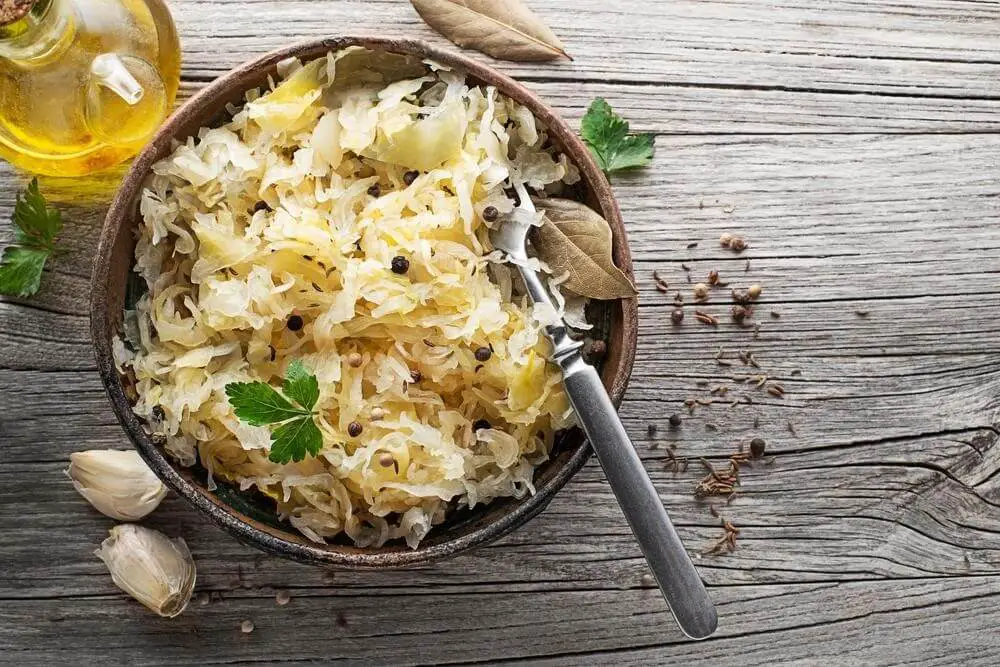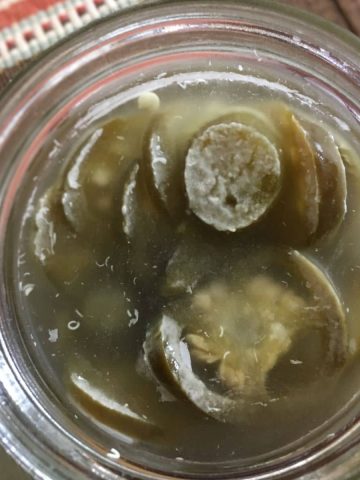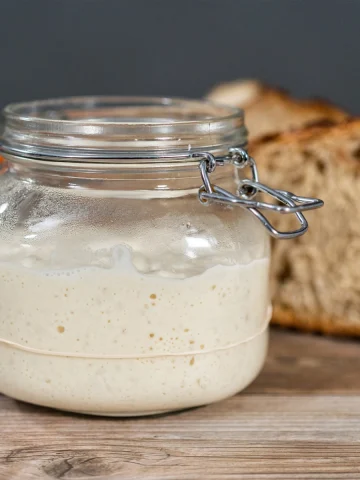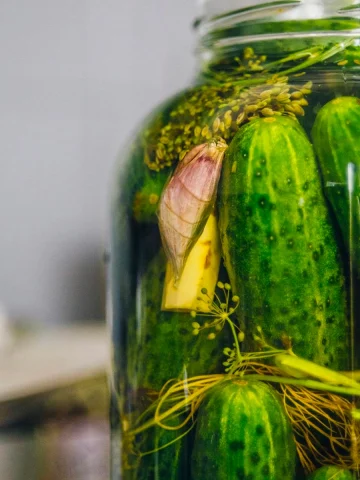From its modern ubiquity in stores across America to its origins in China and Germany, sauerkraut has an incredibly long and significant history. Despite this, many incredible aspects of sauerkraut aren't often talked about. This article will cover 62 amazing facts that you should know about sauerkraut.

Historical and Cultural Significance
1. Sauerkraut didn't actually come from Germany. It was first made over 2,000 years ago by farmers and workers in China.
2. Europeans first began to eat sauerkraut in the 16th century, likely due to the Mongols spreading knowledge of the dish as they traveled.
3. John Jay Terrell fed sauerkraut to prisoners of war during the American Civil War and reduced deaths from smallpox from 90 percent to 5 percent as a result.
4. Sauerkraut first enjoyed popularity in America in the 18th century, as German immigrants brought the recipe along with them.
5. The dish became ubiquitous in America when Allen Slessman founded The Fremont Company and began manufacturing massive amounts of sauerkraut in 1905.
6. Sauerkraut is a German word that translates literally to ”sour herb/cabbage. “
7. Sauerkraut has become so popular in certain parts of the world that it is celebrated. Iowa and Ohio are both home to annual Sauerkraut Festivals.
8. Sauerkraut consumption is declining in Germany today, but it has enjoyed a resurgence in popularity in other parts of the world due to its probiotic benefits.
9. Sauerkraut wasn't originally fermented with salty brine. Chinese fermenters would use rice wine to prepare sauerkraut. You can still make ”weinkraut“ today.
10. “Sauerkraut” was added to the American English Dictionary in 1776. Kraut was noted to be an offensive term for Germans in 1918.
11. Sauerkraut was popular historically because it was a reliable source of vitamins and probiotics over even the harshest winters.
12. The term “liberty cabbage” was used for marketing sauerkraut in the United States during World War I, as manufacturers worried that negative sentiments towards Germany would impact sales.
13. Many sailors would take sauerkraut on their voyages because it was one of the best foods to prevent scurvy.
Facts About the Nutritional Value of Sauerkraut
14. Sauerkraut is very low in calories. Olive My Pickle states their three varieties of sauerkraut have 5 calories per ¼ cup. Hampton Brine claims its raw sauerkraut has 20 calories per ¼ cup. And Bubbies says their probiotic-rich sauerkraut has 0 calories per ¼ cup.
15. Sauerkraut is fermented with lactic acid bacteria, meaning it has many of the same strains of beneficial bacteria as products like yogurt.
16. It's commonly recommended to eat fermented sauerkraut and other probiotic food during and after a course of antibiotics because these foods can restore the gut microbiome's beneficial bacteria.
17. A single gram of sauerkraut contains over 1,000 million CFUs (colony-forming units of bacteria).
18. Studies have also suggested that sauerkraut can contain over 28 unique strains of bacteria. This makes it an excellent probiotic, as a diverse variety of bacteria is essential for a healthy gut microbiome.
19. Sauerkraut is surprisingly high in iron. Eight ounces of sauerkraut have almost 12% of the recommended daily value of iron.
20. Sauerkraut is almost completely fat-free, only containing 3.5 grams of fat per cup.
21. The vitamin C content of just eight ounces of sauerkraut is over 23% of the recommended daily value. This makes it an excellent food for supporting your immune system.
22. Sauerkraut is very low in sugar. One cup of sauerkraut contains 5.8 grams of carbohydrates, of which only 2.4 grams is sugar.
23. except for sulfite, sauerkraut contains no common allergens. Almost everyone can eat sauerkraut because sulfite allergies are exceedingly uncommon.
24. Sauerkraut remains probiotic as long as it is stored properly. The only way that sauerkraut may lose its probiotic benefits is if it is cooked at high enough temperatures to kill the bacteria.
25. Every cup of sauerkraut contains two grams of highly beneficial fiber.
26. Sauerkraut has very few nutritional downsides but is very high in salt. One cup of sauerkraut has over 41% of the recommended daily value (DV) of sodium.

Fermentation Process of Sauerkraut
27. You can prepare sauerkraut in several ways. The most common method is lacto-fermentation, but vinegar or wine methods are also sometimes used.
28. Any cabbage variety can be used to make sauerkraut. Choosing an unusual type of cabbage will allow you to make sauerkraut with a unique flavor, texture, and appearance.
29. The tangy flavor of sauerkraut results from the lactic acid bacteria responsible for fermentation. They produce highly sour lactic acid as they consume the sugars in the cabbage.
30. The best fermentation containers are made from glass, stone, or food-grade plastic. Metal containers aren't suitable for fermenting.
31. The reason why it's so important to cover your sauerkraut with brine entirely is that the brine inhibits the growth of mold and contaminants.
32. The bacteria responsible for fermentation don't just produce lactic acid. They also synthesize B-group vitamins like riboflavin, folates, and B12.
33. The fermentation process also causes CO2 to form in the brine. This is why you often see bubbles in your sauerkraut.
34. Weights are commonly used during fermentation because they prevent the sauerkraut from rising above the brine.
35. The fermentation crocks originally used by Germans hundreds of years ago were made of clay. They typically covered the sauerkraut in the crock with a cloth and weighed the cloth down with rocks.
36. In other cultures, preserved animal stomachs were sometimes used as fermentation vessels.
37. The microbes responsible for fermentation are almost entirely anaerobic, while the microbes that can contaminate sauerkraut require lots of oxygen. This is why most fermentation processes minimize the amount of air around the sauerkraut.
38. Sauerkraut fermentation works best at temperatures between 65 and 72°F early in the process and 72 to 90°F late.
39. The fermentation process makes the nutrients found in cabbage easier for the body to digest.
Health Benefits of Sauerkraut
40. Sauerkraut can help improve the absorption of minerals like magnesium and zinc, which leads to far-reaching improvements in overall health.
41. The antioxidants found in sauerkraut can help reduce the risk of certain types of cancer.
42. Some studies have indicated that the fiber and probiotics in sauerkraut may help to reduce cholesterol levels and blood pressure.
43. Sauerkraut is one of the few vegan sources of vitamin K2 (menaquinone), a vitamin believed to reduce the risk of heart disease.
44. Several studies have shown that people fed probiotics could lose more weight and gain less body fat than people fed a placebo.
45. The vitamin K2 in sauerkraut may also help improve bone strength and mineral density.
46. The enzymes found in sauerkraut can help the body break down food more effectively.
47. Studies indicate that the stomach and brain may be heavily linked. Eating sauerkraut regularly and maintaining a healthy gut microbiome is theorized to lead to reduced stress and improved memory.
48. The fiber content in sauerkraut may help reduce appetite and satiate cravings.
49. Sauerkraut can strengthen your gut lining by improving the gut microbiome. This comes with immune benefits, as the gut lining can prevent harmful bacteria from passing through.
50. Regular consumption of sauerkraut can reduce the severity of digestive issues like constipation and bloating.
Culinary Uses and Recipes
51. The optimal amount of salt in your sauerkraut recipe is one-half tablespoon for every pound of cabbage.
52. Many people enjoy spicing up their guacamole with a spoonful of sauerkraut.
53. It's recommended to avoid cooking sauerkraut because the high temperatures will kill the bacteria responsible for its probiotic benefits. Instead, garnish completed dishes with raw sauerkraut.
54. Sauerkraut makes an incredible burger topping, especially when paired with other vegetables. Check out our article on the many delicious ways to eat sauerkraut.
55. Swiss cheese and sauerkraut make an incredibly savory pairing.
56. If you're out of capers or pickled ginger, sauerkraut is an excellent substitute for adding extra zing to a dish.
57. You can use sauerkraut in vegetable smoothies to add a dash of acidity.
58. Some martini and cocktail recipes use sauerkraut as a key ingredient.
59. Consider pairing your baked potatoes or sausage with sauerkraut to enjoy a traditional take on this classic food.
60. Mixing the salt into your sauerkraut brine evenly is vital because the salt is largely responsible for discouraging the growth of unwanted bacteria and yeast early in the fermentation process.
61. If you want a hearty meal for a cold evening, one of the best dishes you can try is sauerkraut soup.
62. While it might sound like an unlikely ingredient, sauerkraut can be used to add moisture and acidity to a cake. It results in a texture similar to cake with coconut flakes. Check out this delicious chocolate sauerkraut cake recipe.

Frequently Asked Questions
How long does sauerkraut typically take to ferment?
Sauerkraut takes three to four weeks to ferment at optimal temperatures. You should avoid attempting to speed up fermentation because it may cause unwanted flavors.
Can I make sauerkraut at home?
You can make sauerkraut at home without much equipment. You will need a suitable fermentation container made from glass or food-grade plastic, non-iodized salt without caking agents, and a fresh head of cabbage.
Is sauerkraut suitable for individuals with lactose intolerance?
Despite the name of the “lacto-fermentation” process, sauerkraut is entirely suitable for people who are lactose intolerant. The fermentation process is named that because the bacteria produce lactic acid -- a chemical similar to acetic acid (vinegar).
What is the difference between raw sauerkraut and pasteurized sauerkraut?
The difference between raw sauerkraut and pasteurized sauerkraut is that pasteurized sauerkraut is heated and processed to make it shelf-stable. The pasteurization process makes it lose its probiotic benefits.
Can sauerkraut be consumed by individuals on a low-sodium diet?
Sauerkraut can be consumed by individuals on a low-sodium diet in extreme moderation. It's better to consider low-sodium alternatives like yogurt or kefir, however.
Are there any potential side effects of consuming sauerkraut?
Sauerkraut can cause digestive discomfort if eaten in excess. You should only start eating sauerkraut in very small portions and increase your intake over time.
Can sauerkraut be used in vegetarian or vegan recipes?
Sauerkraut can be used in vegetarian and vegan recipes. Unless additives are put into the sauerkraut, it is naturally completely vegan. It makes a great addition to a vegan diet due to its vitamin K2 content.
How should sauerkraut be stored to maintain its freshness and probiotic properties?
Sauerkraut should be refrigerated. You should place it in a spot that will not freeze the sauerkraut (as it may worsen its texture). Avoid placing the sauerkraut in the fridge door because the varying temperatures may harm its longevity.




